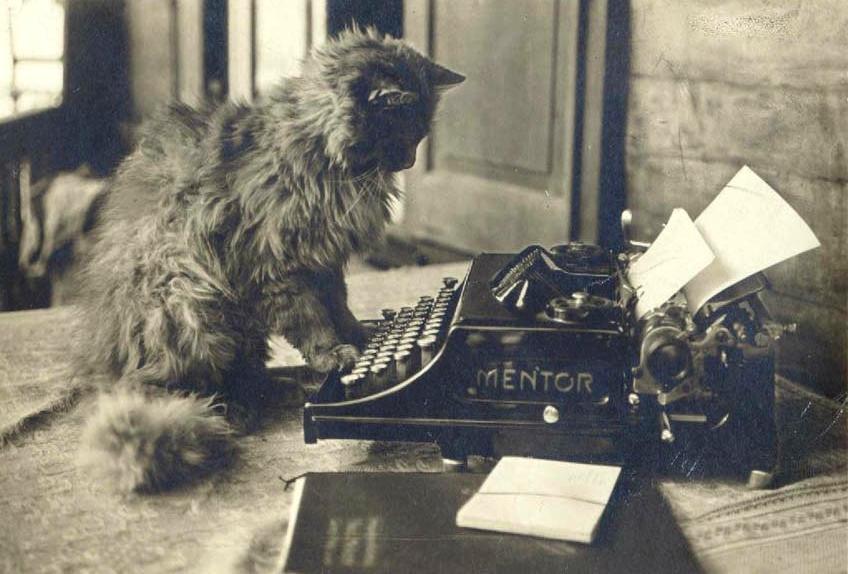
Courtesy: oztypewriter.blogspot.com
I find that one of the biggest challenges journalistic writing have to face is their first feature story. The process involves an awful lot of tact, fairness, honesty, and integrity. You’re painting a picture of this person to your community. While you want to do them justice, you also want to present an unbiased piece. After all, you’re still writing for a newspaper.
In this way, feature stories ask for something that’s nearly impossible. They ask us to get to know a person, learn to appreciate their qualities, interview them, meet with them, yet still go home at the end of the day and write a story that isn’t over-the-top positive. You aren’t their personal cheerleader.
So, How Do You Find That Balance?
Below are the six steps that I use to write a feature story. However, I will add that, the more you practice with this particular skill, the better your pieces are going to become.
1. Choose an Interesting, Newsworthy Subject
We’ve talked about picking an interesting, timely, and relevant topic for other types of writing. But this is a bit more specific. You need to feature a person, group, or business. In other words, you need to pick a subject.
This can be difficult. After all, you might know several subjects personally, making it impossible to cover them, even if they are interesting and relevant. And, even if you can come up with a quality idea, not all subjects (include directors, founders, owners, and individuals) are going to be willing to meet with you.
Feature stories have to come together in a very specific way. It’s like watching puzzle pieces fall into place.
2. Schedule a Convenient, In-Person Interview
This is where the going gets tough. You need to contact your subject and schedule an in-person (not email, not cell phone, not Skype) interview. If you’re covering a group or entity, you may need to interview two or three different people, and you might not be able to get all of your interviewees at one time. Thus, the process becomes a bit muddled.
Feature stories, for the most part, aren’t timely. Unless you’re covering a subject that has, very recently, done something that’s been covered in the news, you don’t need to rush a good piece. You can take your time, work on other stories, and let the interviews come together when the time is right for your subject.
Then, and only then, can you conduct a serious, professional interview that gives you all of the information that you need to write a great story.
3. Choose Your Quotes
When you’ve finished your interviews, sit down at your computer and pull quotes. (As always, I suggest recording your interview to guarantee precise quotations.)
The quotes that you pull should have an underlying theme; representing the angle that you’re going to use for your story. Maybe you want to have an overarching theme of “helping the community” when covering a local grocery store. Or, maybe you want to show the “motivated” side of a local quarterback.
Find your angle, and stick to it. That’s what makes an interesting, honest story.
4. Write Your Draft
Now, go ahead and compile your piece. Usually, with feature stories, you’ll start by placing your quotes and building around them. After all, what your subject has to say is more relevant than what you have to say. The community wants to hear their voice.
Which means, by the way, that you shouldn’t be afraid to include a lot of quotations. I usually make my feature stories 50-60% quotations from my subject, as well as my subject’s friends, family, owners, founders, managers, etc. Between two or three interviewees, you can usually find quite a bit of meat for your piece.
Just remember, this story is about their voice. Not yours.
5. Ask for Approval/Clarification Before Publishing
Once you’ve finished, you can do one of two things. First, you can send your work immediately to your professor or editor and call it a day. Or you can send the piece to your subject for review.
Remember, this does not mean your subject has a free pass to add or change whatever they want. In fact, you shouldn’t give them the paste right to change anything at all. That’s just professional news writing. But, you’re going to want to make sure that your quotes and facts are correct.
This is your subject’s chance to be introduced to the community. Many writers believe that the importance of this moment gives them the inherent right to quickly review your story and alert you if anything is incorrect. Personally, I agree.
6. Move Forward
Assuming your subject has no factual qualms with what you’ve written, go ahead and submit your work.
And that’s all there is to writing a feature piece.







